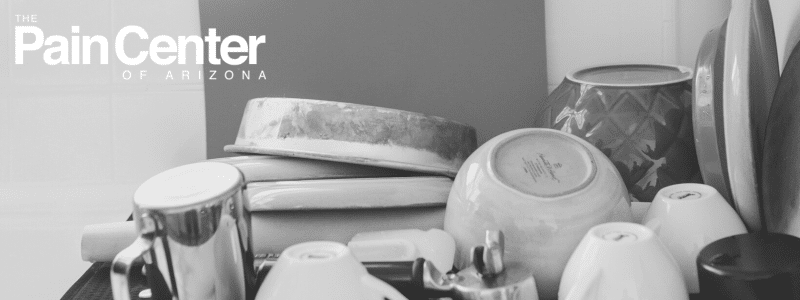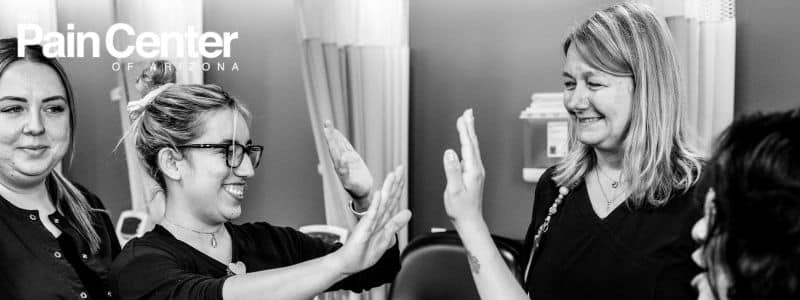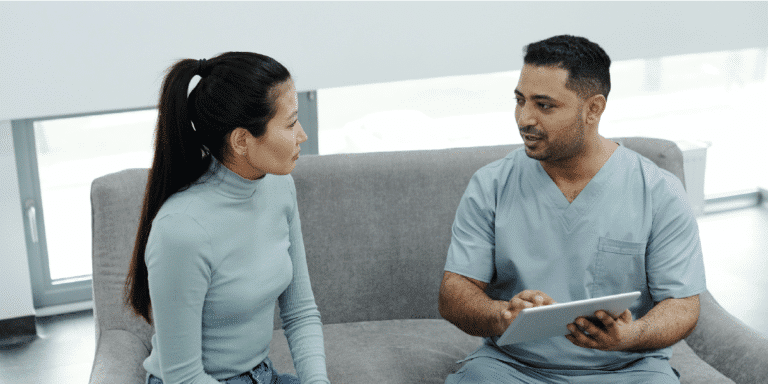
How Do I Avoid Back Pain While Cleaning?
A quick fix to avoid back pain from washing dishes is easy. Simply open one of the cabinet doors below the sink and rest one foot inside. This provides leg support by using your leg as leverage to minimize bending at the waist. Use a short step stool or small box for assistance if your sink has no cabinet below.
Vacuuming and mopping is no walk in the park either. Cleaning can be a pain for big floors- carpet, wood, or tile. We must constantly extend and reach our arms forward and inward, which inevitably causes us to bend forward and strain our backs. People often keep their feet planted while doing these chores, which wears on the back muscles, causing them to over-extend.
The best way to avoid back pain while vacuuming and mopping is to keep your shoulders and hips moving toward your work. Instead of standing in one position and requiring your arms and back to do the job, get your whole body moving.
TPC’s Minimally Invasive Treatments for Back Pain

TPC Spine Stim
TPC Spine Stim is a treatment option for patients with chronic back, leg, or neck pain who have not responded to conservative treatments for at least six months. This treatment involves implanting a nerve stimulation device into the patient’s spine. The TPC Spine Stim device delivers low-voltage electrical currents to targeted areas of the spine, which helps reduce the pain signals causing chronic pain.
TPC Spine Fuse
TPC Spine Fuse is a minimally invasive spinal fusion solution that targets spinal degeneration, often caused by stenosis, spondylolisthesis, and related conditions. These conditions can lead to pressure on the spinal cord, causing pain and numbness, and instability that causes painful movements of the vertebrae.
During the TPC Spine Fuse procedure, a small incision is made in the back under live X-ray guidance. A device is then placed between the spinous processes to fuse the affected segment and provide stability to the back. Depending on the patient’s needs, this procedure can be done through different approaches, such as a posterior, oblique, or lateral approach.
TPC Spine Lift
TPC Spine Lift is a spinal decompression treatment designed to alleviate pain caused by spinal nerve pressure due to spinal stenosis and related conditions. The procedure uses the Vertiflex technique, which involves lifting the space where the lumbar vertebrae are narrowing or bulging. This is done under live X-ray guidance using a small device that opens the pressure area. The procedure is intended to relieve pain and discomfort in patients suffering from chronic pain caused by spinal stenosis and related conditions.
TPC Sacral Fuse
TPC Sacral Fuse is a minimally invasive outpatient procedure to alleviate pain caused by sacroiliac joint dysfunction. The process involves placing a small fusion device under live X-ray guidance right into the sacroiliac joint, which fuses the joint and provides stability.
The procedure takes about 45 minutes and is often performed in an outpatient setting. The prevalence of sacroiliac joint dysfunction is approximately 25% in adult patients with chronic low back pain, and the pain can be unilateral or bilateral but usually not midline.
Published On: March 5, 2014
Updated On: April 6, 2023



